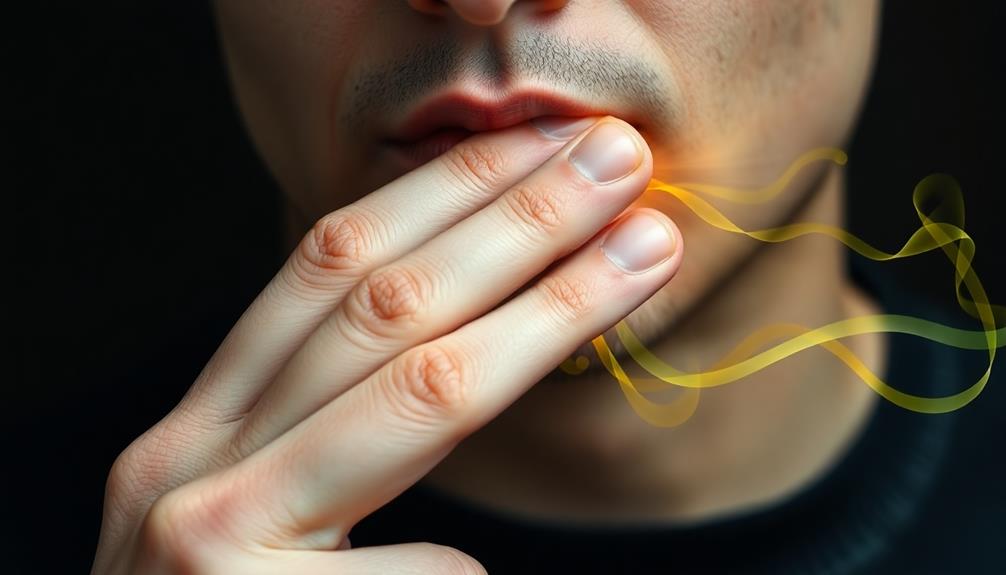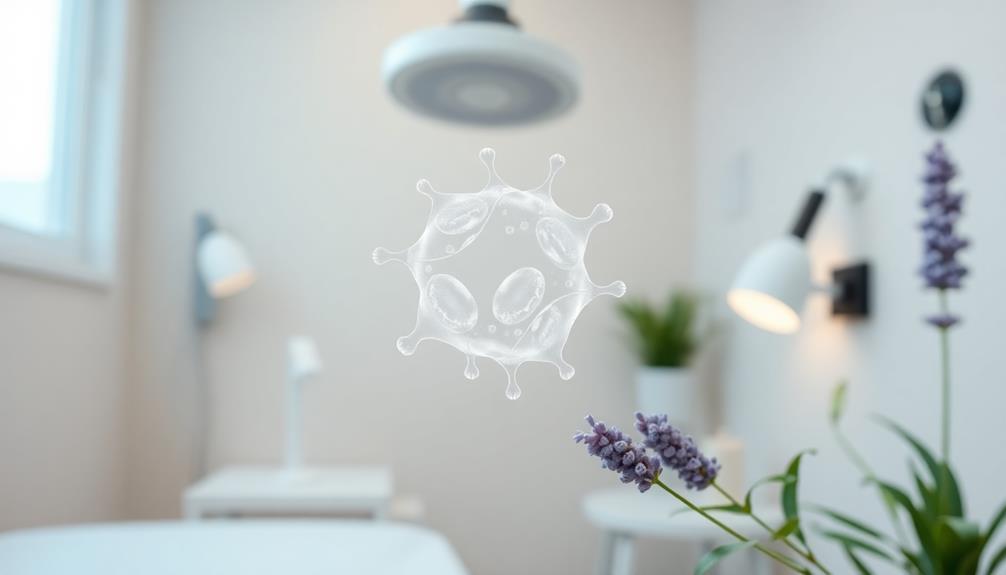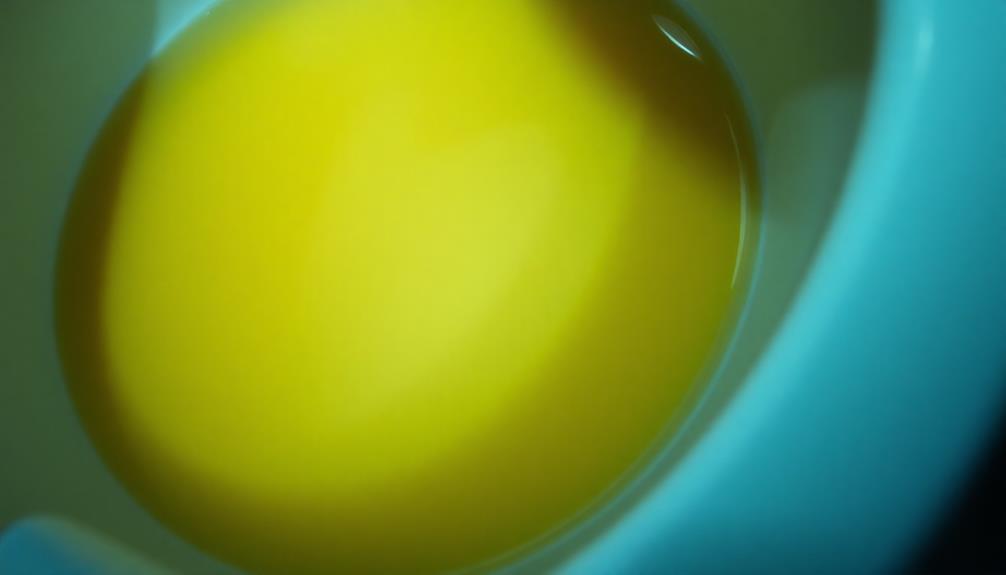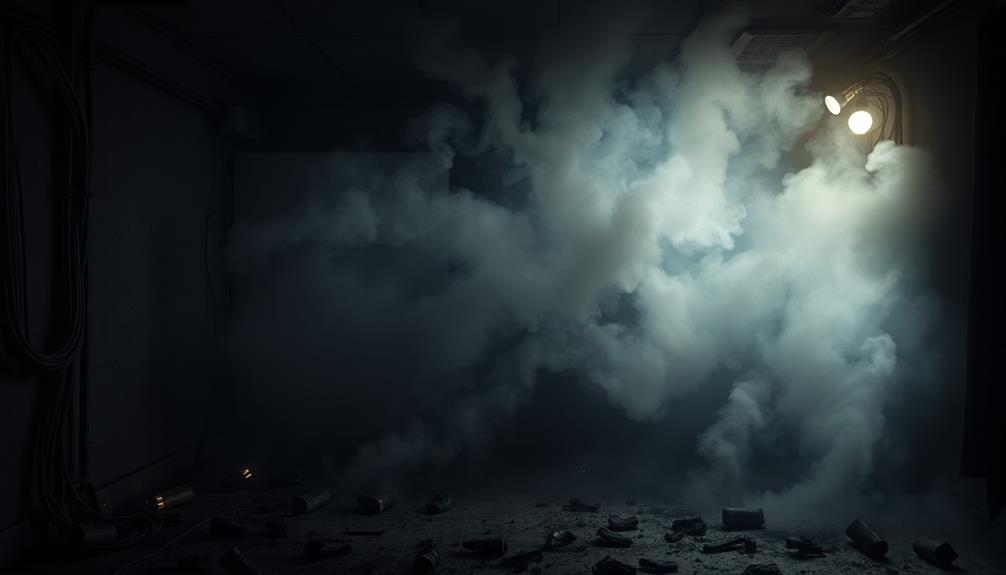Candida breath has a distinct, musty smell that can remind you of spoiled bread or beer. This odor often appears with oral thrush, which happens when Candida overgrows in your mouth. If you've been eating sugary foods, the smell might worsen. You might notice white patches on your tongue or persistent bad breath, especially if your mouth feels dry. Poor oral hygiene or a weakened immune system can make the odor stronger. Treating the infection can help clear up the smell, and practicing good oral care can keep your breath fresh. There's more to discover, so keep exploring!
Key Takeaways
- Candida breath has a musty odor, often described as sweet or sour, similar to yeast or bread.
- The smell can worsen with high sugar intake, which fuels Candida growth.
- Individuals may notice a distinct odor accompanying white patches on the tongue, indicative of oral thrush.
- Dry mouth exacerbates the breath odor due to reduced saliva, which normally helps control bacteria.
- A compromised immune system can lead to a more offensive odor from Candida overgrowth.
Introduction
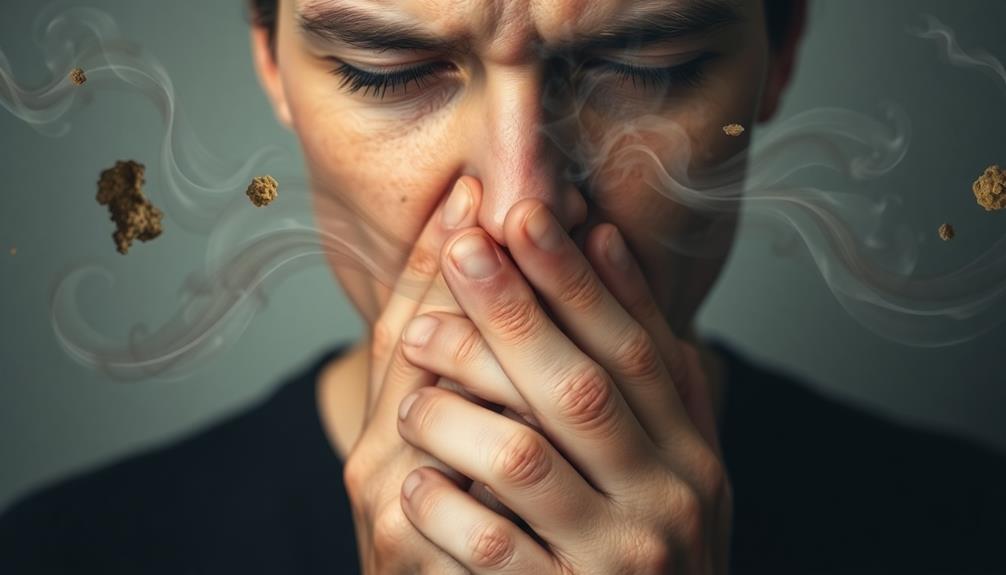
Candida breath, often a sign of oral thrush, can be quite unsettling. You might notice a musty odor or a distinct smell coming from your mouth, which is usually caused by an overgrowth of Candida albicans, a type of yeast.
This fungal infection often leads to bad breath, and it can be especially pronounced if you've been eating sugary foods. Those sweet treats can actually fuel the yeast, making the foul smell even worse.
If you see white patches on your tongue or if the odor seems persistent, it's a good idea to pay attention. These symptoms often indicate oral thrush, particularly in individuals with weakened immune systems or those on certain medications.
The smell can be reminiscent of bread or beer, reflecting the yeast's metabolic byproducts.
Luckily, there are effective treatments available. Antifungal medications can help reduce or eliminate the odor and get rid of the infection.
Description of the Smell

The smell associated with Candida overgrowth is often unmistakable, with many describing it as sweet, musty, or even sour. This scent can remind you of yeast or bread, and it tends to develop when sugars break down due to fungal buildup in your mouth.
If you have bad breath caused by Candida, you might also notice a white coating on your tongue. This coating can add to the unpleasant odor, especially if you're dealing with dry mouth due to reduced saliva production.
People with certain health conditions or weakened immune systems may find the odor to be more offensive. The combination of dry mouth and Candida overgrowth can lead to a noticeable change in breath scent.
If you smoke, this can complicate your oral hygiene routine, making it even more crucial to pay attention to your teeth and gums.
To combat this issue, maintain a consistent oral hygiene routine. Brush your teeth twice daily, floss regularly, and stay hydrated.
Addressing underlying health factors can also help improve your breath. Remember, taking care of your mouth is essential for overall well-being!
Source and Composition
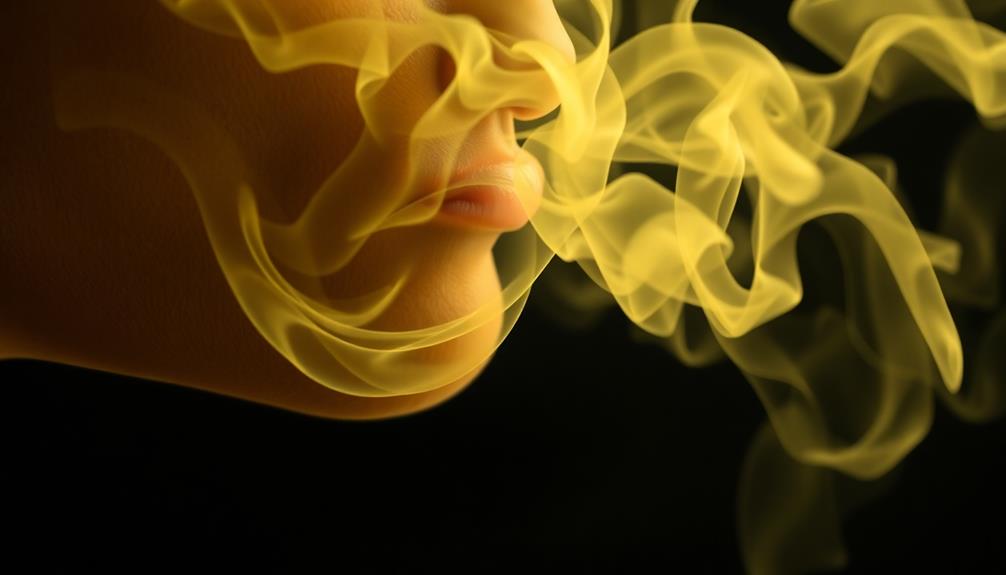
A key factor contributing to the breath smell associated with Candida overgrowth is the fermentation of sugars in your mouth. When Candida, particularly Candida albicans, grows excessively, it leads to a condition known as oral thrush. This fungal infection can create a musty or yeasty odor, similar to bread or beer.
The fermentation process by these fungi produces volatile compounds that contribute to this distinct breath smell. These volatile compounds, such as ethanol and various sulfur-containing molecules, are often responsible for the sharp, pungent aroma associated with the fermentation process. Interestingly, the unique bouquet has even been compared to vampire blood’s distinctive scent in certain folklore, where supernatural blood carries an oddly intoxicating fragrance. This parallel only underscores the potent and otherworldly odors that emerge from biochemical processes taking place naturally in these fungi.
If you have a weakened immune system, a high sugar diet, or you're taking certain medications, you're more likely to experience Candida overgrowth. The buildup of this fungus can create a white coating on your tongue and oral mucosa, often linked to halitosis, which is the fancy term for bad breath.
Fortunately, treatment of oral thrush with antifungal medications can significantly help. By addressing the underlying Candida infection, you can reduce that foul breath odor and improve your overall breath quality.
Typical Scenarios or Environments
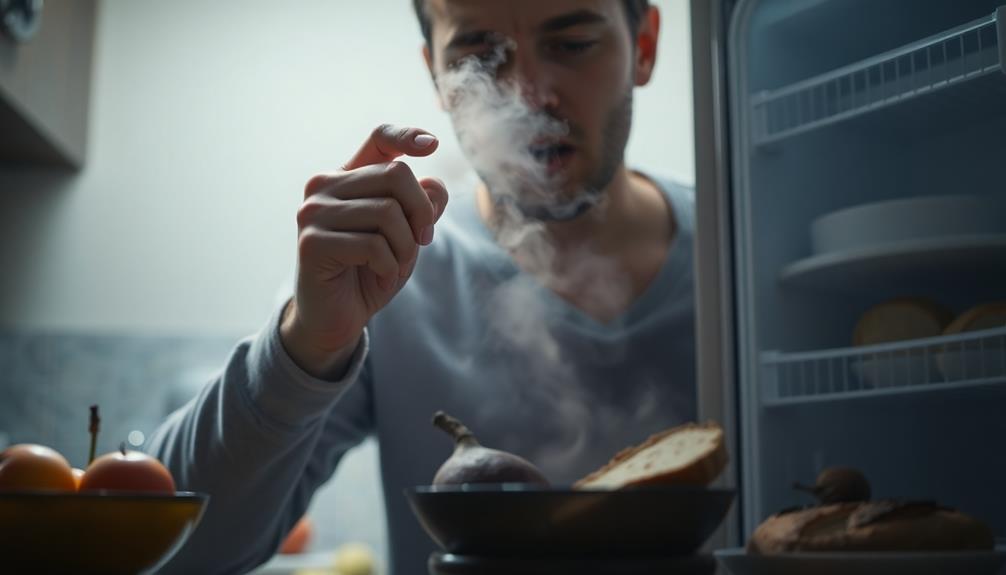
Oral thrush typically flourishes in environments where sugar consumption is high or oral hygiene is lacking. If you often indulge in sweets or skip brushing your teeth, you might find yourself at risk for Candida overgrowth. This can lead to a distinct breath odor that's sweet or yeast-like. The more sugar you consume, the more fuel you give to the Candida fungus, making the smell even stronger.
Additionally, if you have dry mouth, you might notice the breath odor becoming more pronounced. Saliva plays a key role in controlling fungal growth and odor, so without it, you can end up with a stronger smell.
People with compromised immune systems or those taking antibiotics are also more likely to experience stronger Candida breath.
In social settings, this fungal breath can be particularly noticeable. You might feel self-conscious or anxious, especially when talking closely with others.
Emotional or Cultural Associations

Experiencing Candida breath can evoke significant emotional responses, often leading to discomfort and embarrassment, especially in social situations. You might feel self-conscious about your bad breath, fearing what others think. This can create feelings of shame and anxiety, particularly in cultures where oral health is closely linked to personal hygiene.
Many people associate bad breath with poor hygiene, which can lead to stigma and misunderstandings in interpersonal relationships. When you're aware of this cultural perception, it's easy to feel isolated and worried about being judged. Those feelings can be heightened in environments that value personal grooming, making you even more anxious.
But remember, Candida breath is a medical condition, not a reflection of your worth or cleanliness. Understanding the causes of Candida breath can help you feel more empowered. Seeking treatment can alleviate not just the physical symptoms but also the emotional burden that comes with it.
It's important to talk openly about these feelings, as addressing them can lead to better support from friends and family. You're not alone, and taking steps to improve your oral health can positively impact both your breath and your emotional well-being.
Health or Safety Considerations
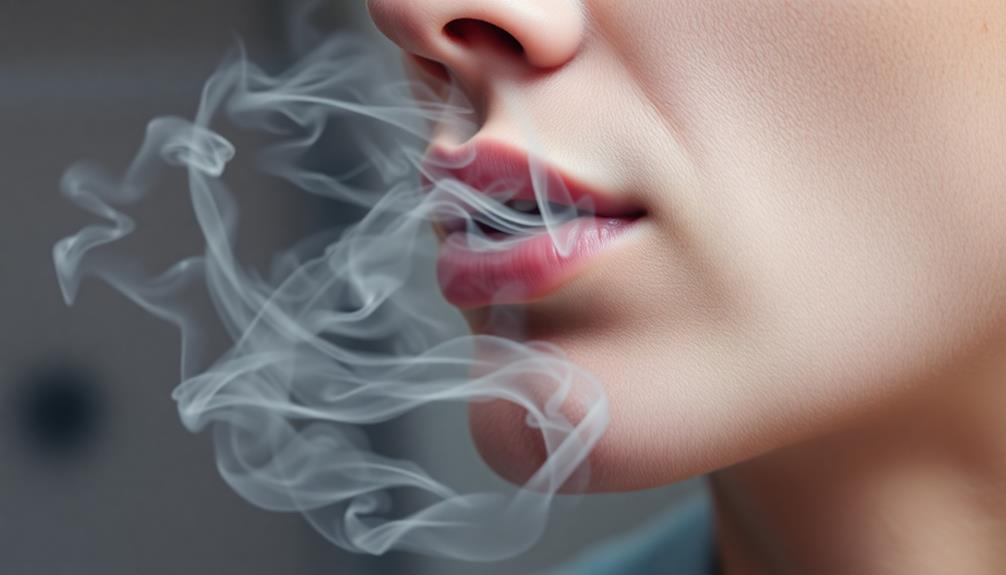
Candida breath can pose significant health and safety considerations that you shouldn't ignore. This type of bad breath is often caused by oral thrush, which happens when there's an overgrowth of Candida in your mouth. You might notice a sweet or musty odor, often accompanied by a white coating on your tongue.
It's important to understand that people with weakened immune systems or those taking certain medications are at a higher risk for developing this condition. If you have persistent bad breath, especially with white patches in your mouth or pain, consulting a healthcare professional is essential for proper diagnosis and treatment.
To prevent bad breath from oral thrush, maintaining good oral hygiene practices is key. Regularly brushing your teeth, cleaning your tongue, and visiting your dentist can help keep Candida at bay.
These steps not only promote your health but also boost your confidence in social situations. Remember, good oral hygiene is your best defense against Candida overgrowth!
Final Thoughts

Dealing with bad breath caused by Candida can be frustrating, but understanding its origins and symptoms is crucial for effective management.
Candida overgrowth often leads to oral thrush, which creates that musty, yeast-like smell you might notice. If you're also seeing white patches on your tongue or experiencing a foul taste, these could be signs of a fungal infection.
People with compromised immune systems or poor oral hygiene are more likely to develop these infections, which can lead to bad breath.
Dry mouth, or xerostomia, plays a big role too, as it reduces saliva production. Saliva helps keep harmful bacteria in check, so less saliva means more odor.
To tackle the unpleasant smell, it's essential to treat the underlying fungal infection. Prescription antifungal medications can help eliminate the Candida overgrowth in your mouth.
Remember, maintaining good oral hygiene and staying hydrated can also make a big difference.
By taking these steps, you can effectively manage Candida breath and improve your overall oral health.
Don't let bad breath hold you back—understanding and addressing these issues can lead to a fresher smile!
Frequently Asked Questions
Does Candida Make Your Breath Stink?
Yes, Candida can make your breath stink. It often produces a foul, yeast-like odor due to its overgrowth in the mouth. Maintaining good oral hygiene and addressing any underlying issues can help improve your breath.
Why Does My Breath Smell Like a Yeast Infection?
If your breath smells like a yeast infection, it's likely due to Candida overgrowth in your mouth. Poor oral hygiene, a high-sugar diet, or dry mouth can contribute to this unpleasant odor you're experiencing.
Why Does My Breath Smell Like Fungus?
Your breath might smell like fungus due to an overgrowth of yeast in your mouth. This can happen if you have dry mouth or oral thrush, leading to a characteristic musty or sweet odor.
What Does Candida Albicans Smell Like?
When you encounter Candida albicans, you might notice a musty or sweet odor. This smell often signals an imbalance in your oral microbiome, indicating a potential issue that needs attention for better oral health.
